Jean Cousty
LIGM
Join, select, and insert: efficient out-of-core algorithms for hierarchical segmentation trees
Oct 05, 2022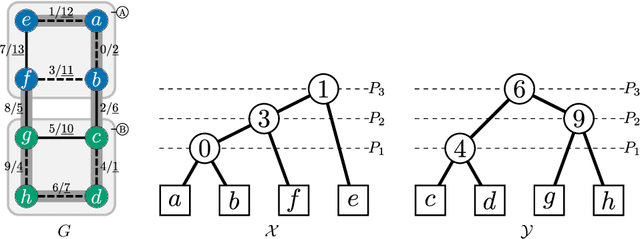

Abstract:Binary Partition Hierarchies (BPH) and minimum spanning trees are fundamental data structures involved in hierarchical analysis such as quasi-flat zones or watershed. However, classical BPH construction algorithms require to have the whole data in memory, which prevent the processing of large images that cannot fit entirely in the main memory of the computer. To cope with this problem, an algebraic framework leading to a high level calculus was introduced allowing an out-of-core computation of BPHs. This calculus relies on three operations: select, join, and insert. In this article, we introduce three efficient algorithms to perform these operations providing pseudo-code and complexity analysis.
Efficient Multiscale Object-based Superpixel Framework
Apr 07, 2022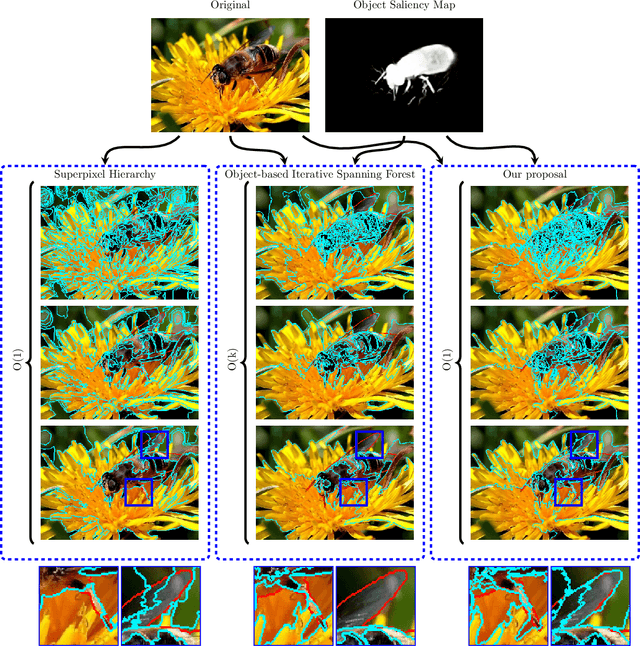
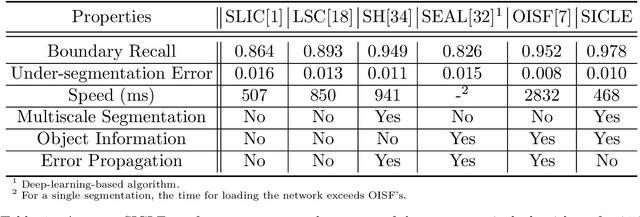
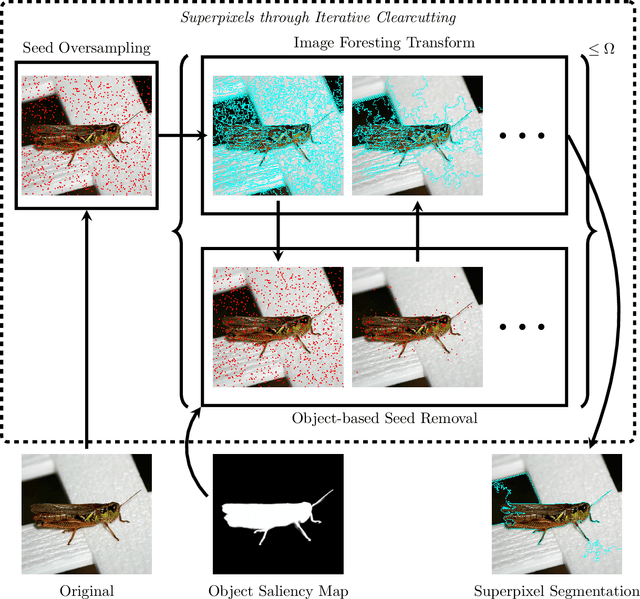

Abstract:Superpixel segmentation can be used as an intermediary step in many applications, often to improve object delineation and reduce computer workload. However, classical methods do not incorporate information about the desired object. Deep-learning-based approaches consider object information, but their delineation performance depends on data annotation. Additionally, the computational time of object-based methods is usually much higher than desired. In this work, we propose a novel superpixel framework, named Superpixels through Iterative CLEarcutting (SICLE), which exploits object information being able to generate a multiscale segmentation on-the-fly. SICLE starts off from seed oversampling and repeats optimal connectivity-based superpixel delineation and object-based seed removal until a desired number of superpixels is reached. It generalizes recent superpixel methods, surpassing them and other state-of-the-art approaches in efficiency and effectiveness according to multiple delineation metrics.
Component Tree Loss Function: Definition and Optimization
Jan 20, 2021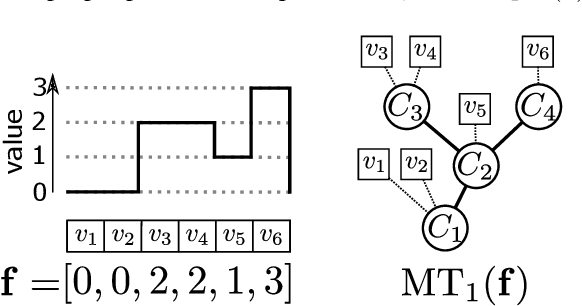
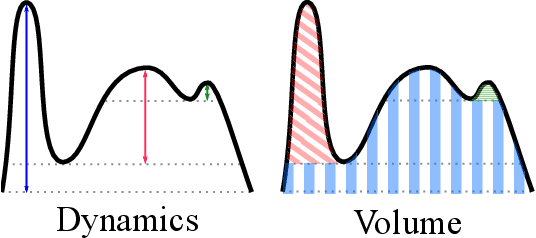
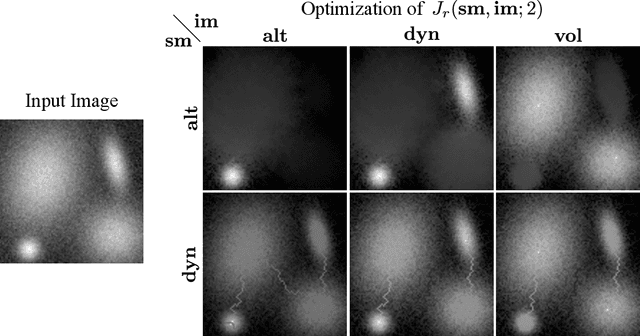
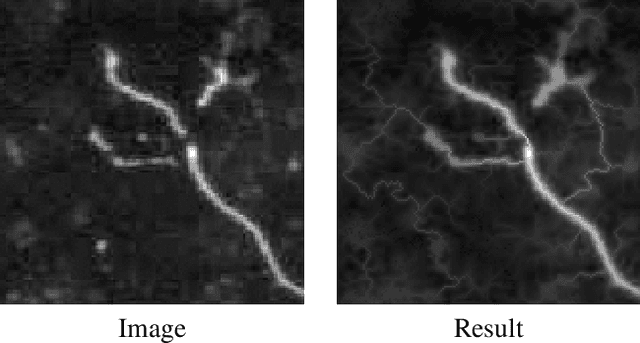
Abstract:In this article, we propose a method to design loss functions based on component trees which can be optimized by gradient descent algorithms and which are therefore usable in conjunction with recent machine learning approaches such as neural networks. We show how the altitudes associated to the nodes of such hierarchical image representations can be differentiated with respect to the image pixel values. This feature is used to design a generic loss function that can select or discard image maxima based on various attributes such as extinction values. The possibilities of the proposed method are demonstrated on simulated and real image filtering.
Atlas-based automated detection of swim bladder in Medaka embryo
Feb 16, 2019



Abstract:Fish embryo models are increasingly being used both for the assessment of chemicals efficacy and potential toxicity. This article proposes a methodology to automatically detect the swim bladder on 2D images of Medaka fish embryos seen either in dorsal view or in lateral view. After embryo segmentation and for each studied orientation, the method builds an atlas of a healthy embryo. This atlas is then used to define the region of interest and to guide the swim bladder segmentation with a discrete globally optimal active contour. Descriptors are subsequently designed from this segmentation. An automated random forest clas-sifier is built from these descriptors in order to classify embryos with and without a swim bladder. The proposed method is assessed on a dataset of 261 images, containing 202 embryos with a swim bladder (where 196 are in dorsal view and 6 are in lateral view) and 59 without (where 43 are in dorsal view and 16 are in lateral view). We obtain an average precision rate of 95% in the total dataset following 5-fold cross-validation.
VOIDD: automatic vessel of intervention dynamic detection in PCI procedures
Oct 12, 2017


Abstract:In this article, we present the work towards improving the overall workflow of the Percutaneous Coronary Interventions (PCI) procedures by capacitating the imaging instruments to precisely monitor the steps of the procedure. In the long term, such capabilities can be used to optimize the image acquisition to reduce the amount of dose or contrast media employed during the procedure. We present the automatic VOIDD algorithm to detect the vessel of intervention which is going to be treated during the procedure by combining information from the vessel image with contrast agent injection and images acquired during guidewire tip navigation. Due to the robust guidewire tip segmentation method, this algorithm is also able to automatically detect the sequence corresponding to guidewire navigation. We present an evaluation methodology which characterizes the correctness of the guide wire tip detection and correct identification of the vessel navigated during the procedure. On a dataset of 2213 images from 8 sequences of 4 patients, VOIDD identifies vessel-of-intervention with accuracy in the range of 88% or above and absence of tip with accuracy in range of 98% or above depending on the test case.
New characterizations of minimum spanning trees and of saliency maps based on quasi-flat zones
May 27, 2015
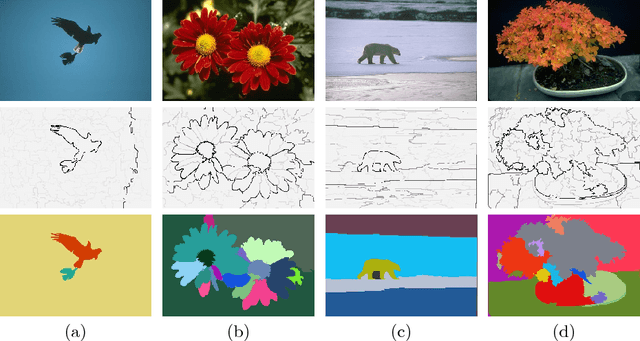


Abstract:We study three representations of hierarchies of partitions: dendrograms (direct representations), saliency maps, and minimum spanning trees. We provide a new bijection between saliency maps and hierarchies based on quasi-flat zones as used in image processing and characterize saliency maps and minimum spanning trees as solutions to constrained minimization problems where the constraint is quasi-flat zones preservation. In practice, these results form a toolkit for new hierarchical methods where one can choose the most convenient representation. They also invite us to process non-image data with morphological hierarchies.
A graph-based mathematical morphology reader
Apr 30, 2014



Abstract:This survey paper aims at providing a "literary" anthology of mathematical morphology on graphs. It describes in the English language many ideas stemming from a large number of different papers, hence providing a unified view of an active and diverse field of research.
An efficient hierarchical graph based image segmentation
Jun 13, 2012



Abstract:Hierarchical image segmentation provides region-oriented scalespace, i.e., a set of image segmentations at different detail levels in which the segmentations at finer levels are nested with respect to those at coarser levels. Most image segmentation algorithms, such as region merging algorithms, rely on a criterion for merging that does not lead to a hierarchy, and for which the tuning of the parameters can be difficult. In this work, we propose a hierarchical graph based image segmentation relying on a criterion popularized by Felzenzwalb and Huttenlocher. We illustrate with both real and synthetic images, showing efficiency, ease of use, and robustness of our method.
 Add to Chrome
Add to Chrome Add to Firefox
Add to Firefox Add to Edge
Add to Edge